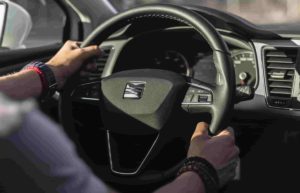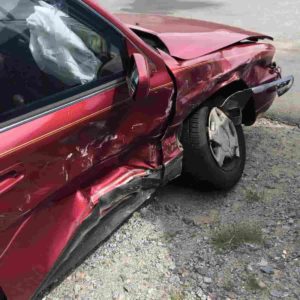 Utah is home to some the country’s best national parks, serving up idyllic spots for sightseeing and birdwatching. But a day of enjoying the scenery can quickly turn into a morbid tour of the state’s courtrooms if you’re caught driving without car insurance.
Utah is home to some the country’s best national parks, serving up idyllic spots for sightseeing and birdwatching. But a day of enjoying the scenery can quickly turn into a morbid tour of the state’s courtrooms if you’re caught driving without car insurance.
Authorities take a hardline against motorists nabbed violating Utah’s mandatory insurance laws. Every driver is required to carry insurance meeting the state’s mandated minimum liability limits. These coverage amounts include:
- $65,000 in Liability Coverage For Bodily Injury In One Collision
- $25,000 in Liability Coverage For Bodily Injury To One Person
- $25,000 in Liability Coverage For Damage to Property
- $3,000 in Personal Injury Protection (PIP)
Purchasing coverage up to these amounts will ensure you have the means to cover the costs of treating injuries you or your passengers and other members listed on your policy sustain in an accident. However, many motorists choose to purchase additional components to cover other types of damage not included under a basic policy. It’s a smart move because the minimum liability limits will often fall short when reimbursing you for the full cost of damages you sustained, leaving you to shoulder the remaining costs.
In this article, we’ll explore:
- Penalties for driving with no insurance in Utah
- Reinstating your license and registration in Utah
- The “no-fault” insurance system in Utah
- Premium increases after a not-at-fault accident in Utah
- Reducing your insurance rates in Utah
If you are stopped by authorities, you will be required to present proof your vehicle is insured up to the state’s minimum coverage limits. Law enforcement officers will accept any official evidence of an existing policy, such as an insurance card issued by your provider or a printed copy of the declarations page of your coverage documents. If you are unable to present proof of insurance or officers discover that your vehicle is uninsured/underinsured, you could face the following penalties:
Penalties for Driving Without Car Insurance in Utah
While the state’s vigilant troopers are always on the hunt for errant motorists, you may be nabbed for violating Utah’s insurance laws long before you have a chance to hit the road. The state makes use of an electronic database to keep tabs on local drivers. If your coverage lapses for any reason, you will receive a notification demanding proof of a current policy.
Whether you’re caught on the road or fail to comply with requests from the state, you could be ordered to pay steep fines. First-time offenders will have to fork over $400 in fines and an additional $50 in surcharges. Repeat offenders may have to pay as much as $1000 in fines. In most cases, your driving privileges (your license and vehicle’s registration) will be revoked or suspended.
How Can I Reinstate My License After Getting Caught Driving Without Car Insurance in Utah?
Before you can return to the road, the state will need to see proof that you are insured up to the mandated minimum liability limits. However, as someone who has violated Utah’s insurance laws, you will be required to purchase a type of coverage known as “SR-22 insurance” before your driving privileges are restored.
This type of policy covers you as an individual rather than just your vehicle. As a result, it’s often far more expensive than a standard basic policy. Your insurer will also need to file an SR-22 form/certificate on your behalf to update the state on the status of your coverage. If you let your insurance lapse – you may have missed a payment or cancelled your plan – your provider must report this change to authorities. Not only will your license and registration be re-suspended, you will also have to restart the SR-22 filing period (typically around 3 years) from scratch.
Keep in mind that any driver requiring SR-22 insurance is regarded as a high-risk motorist. Statistically, this category of driver is more likely to be involved in an accident than the average road user.
FAQs About Driving Without Car Insurance in Utah
Is Utah a No-Fault State?
Yes. Unlike most other states, Utah employs a no-fault system when handling auto insurance claims. Simply put, components of your policy will kick in to reimburse you for medical costs stemming from an accident regardless of whether you caused the accident or not. In so-called “fault” states, the driver responsible for causing the crash can be held liable for any damages sustained by the other party/parties involved.
While a “no-fault” system will ensure your medical costs are covered in the event of an accident, you have little recourse if your policy features fall short as you are not legally allowed to file a lawsuit or third-party insurance claim against the party/parties involved unless your injuries meet certain criteria. Injuries and conditions that fall under these thresholds include:
- Permanent disability
- Permanent disfigurement
- Permanent impairment
- Dismemberment
Can My Premiums Increase After a Not-At-Fault Accident in Utah?
Unfortunately, yes. Statistically, if you have been involved in an accident – regardless of who caused it – you are now far more likely to be involved in another collision. Insurers calculate a significant portion of your premium based on your personal risk profile. Some factors your provider will also consider include:
- Your permanent driving record;
- Your accident history;
- Your driving experience;
- Average annual mileage;
- Your age;
- Your occupation;
- Your car make, model, and age; and
- Your credit history.
How Can I Reduce My Premium in Utah?
If you were caught driving without insurance, chances are you are now paying a small fortune to retain your driving privileges. While this financial burden will be lifted once you have fulfilled your SR-22 filing requirements, you can take several steps to reduce your premium right now.
Firstly, our Geeks recommend tinkering with your deductible. This amount represents how much you would have to pay to cover costs before your policy features kick in to reimburse you for the remainder. A high deductible offers less protection but will help reduce your premium. Alternatively, a low deductible will safeguard you against unexpected expenses but will increase your policy rates.
Secondly, you should scrap any policy features that you feel you are unlikely to use. However, make sure that your policy still complies with the state’s insurance laws. And finally, you should take advantage of any discounts offered by your insurer.

 Home of the Rock and Roll Hall of Fame,
Home of the Rock and Roll Hall of Fame,  Who caused the accident? This fundamental question lies at the heart of any insurance claim, helping providers calculate and determine fair compensation to the motorists involved. But this simple question doesn’t always have an easy answer. Often, claims adjusters have to perform detailed investigations to determine insurance liability.
Who caused the accident? This fundamental question lies at the heart of any insurance claim, helping providers calculate and determine fair compensation to the motorists involved. But this simple question doesn’t always have an easy answer. Often, claims adjusters have to perform detailed investigations to determine insurance liability.